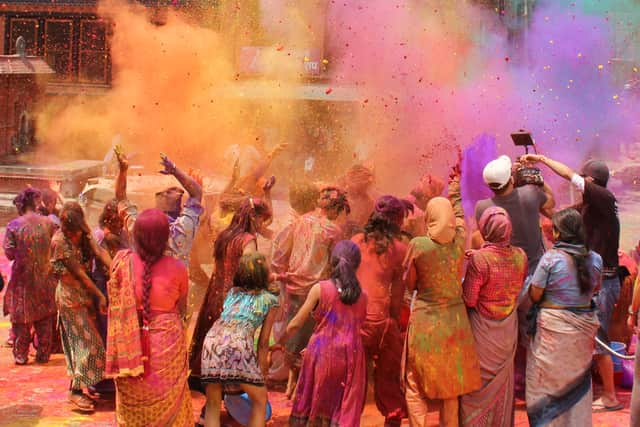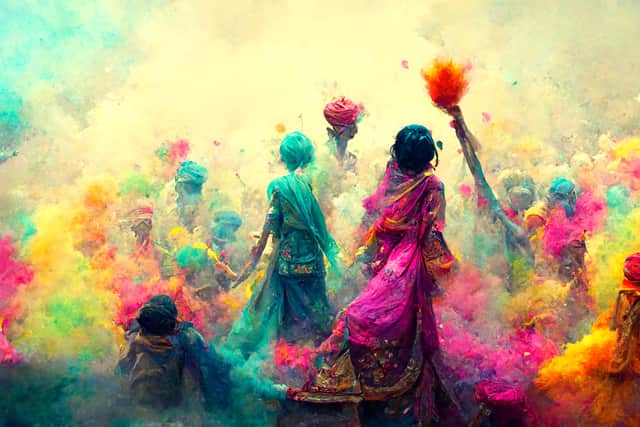Holi 2023: When is it, what is it and how is the festival of colours celebrated around the world
This article contains affiliate links. We may earn a small commission on items purchased through this article, but that does not affect our editorial judgement.
and live on Freeview channel 276
The Hindu festival of Holi returns for celebrations once again this year. The festival is also known as the "festival of love", "festival of spring" and the "festival of colours”, and is celebrated in many communities across the world.
The festival of Holi serves as a reminder of good over evil, reflecting the Hindu belief that faith and devotion leads to salvation that can be attained by everyone who believes. Many believe the festival marks the beginning of Spring, and the end of winter.
Advertisement
Hide AdAdvertisement
Hide AdHoli is celebrated by Hindus in Bangladesh and Pakistan, plus other countries with large diaspora populations like Suriname, South Africa, and Malaysia. The United Kingdom and the United States also hold parties, concerts, and events across the country, making it possible for many to join the festivities.
The celebrations are often separated into two days, known as Jalanewali Holi and Rangwali Holi. Jalanewali Holi is the day in which families and friends gather to celebrate together and will traditionally light a bonfire. The celebrations sometimes include throwing grains, popcorn and chickpeas into the bonfire. Rangwali Holi celebrates the beginning of spring.
So, when is Holi and how is it celebrated? Here’s everything you need to know about the festival.
When is Holi?
Rangwali Holi falls on March 8, 2023.
The story of Holi
Holi gets its name from Holika, the demoness sister of evil King Hiranyakashyap in Hindu mythology. National Geographic states that Holi comes from a story in which “the villainous king tried to forbid his son Prahlad from worshipping one of the Hindu gods, Vishnu, but Prahlad persisted despite his father”.
Advertisement
Hide AdAdvertisement
Hide Ad“So the king ordered Prahlad and Holika (who was immune to fire) to sit on a pyre, a wooden structure for burning a body as part of a funeral or execution. When the flames struck, Holika burnt to death in spite of her immunity to fire, and miraculously Prahlad prevailed because he called on the help of Lord Vishnu.”


How is Holi celebrated?
There are many ways in which Holi is acknowledged and celebrated in different ways all around the world. Famously on Rangwali Holi, which is the second day of the festival, people will throw different colour powder all over each other and their surroundings. This is called gulal.
According to National Geographic the flying multihued pigments serve as a reminder of the story of Krishna, saying: “Legend states that after being cursed with blue skin by a demon, Krishna worried that his fair-skinned consort, Radha, would no longer love him. When he complained to his mother Yashoda, she teasingly replied for Krishna to paint Radha’s face whatever colour he chose, so he did.”
The colours also hold powerful meanings for example, red signifies love and fertility, whereas Blue is seen as the colour of calmness. Pink means good health, orange is a sign of courage and purple is said to bring peace and wisdom.
Advertisement
Hide AdAdvertisement
Hide Ad

Green marks new beginnings and yellow is seen as the colour of happiness and peace. During the celebrations people are advised not to use white and black powder as white is used for funerals, and black is connected with darkness.
Food plays a major role in the celebrations, particularly in India, where families will prepare gujiya, which is a dumpling-like sweet filled with dried fruits and nuts spiced with cardamom. Dahi Vada is another snack prepared for the festival with yoghurt and fried lentil balls. This originates from Karnataka in India.
